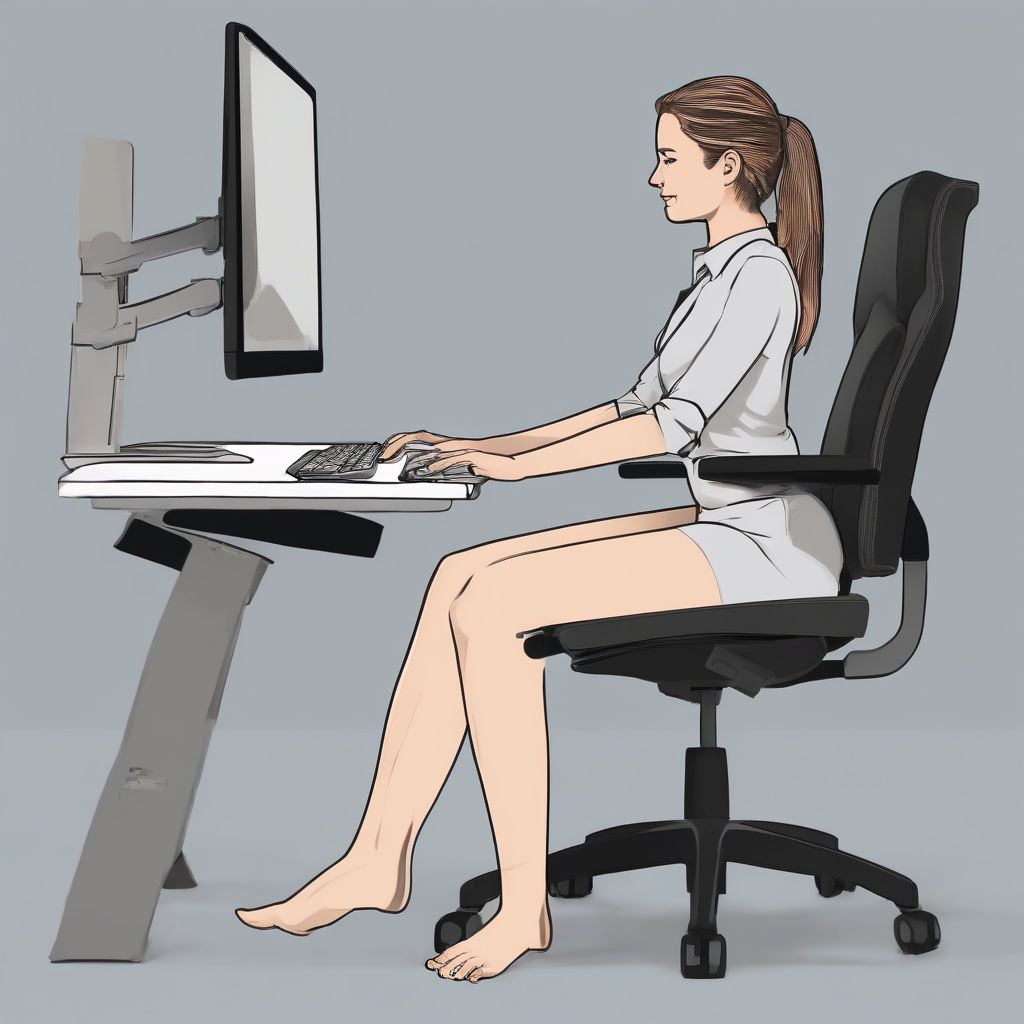Have you ever woken up with a stiff neck, aching back, or sore wrists? While we often attribute these aches and pains to aging or strenuous activity, the culprit might be closer to home – literally. Many of us spend hours each day at our desks, and if our workspaces aren’t ergonomically sound, it can lead to discomfort, pain, and even long-term musculoskeletal disorders.
But what exactly does it mean to have an ergonomic workspace? Simply put, it’s about designing your workstation to fit you – your body, your movements, and your tasks. It’s about working smarter, not harder, and preventing injuries by optimizing your comfort and efficiency.
Why an Ergonomic Workspace Matters
Think of ergonomics as the science of comfort. When your workspace is ergonomically designed:
- You reduce your risk of injuries. Repetitive strain injuries (RSIs) like carpal tunnel syndrome, tendonitis, and back pain are common among office workers. An ergonomic setup can significantly minimize these risks.
- You improve your posture. Hunching over a keyboard or craning your neck to see your screen can lead to chronic pain and discomfort. Ergonomics encourages natural alignment, reducing strain on your muscles and joints.
- You boost your productivity. Discomfort is distracting! When you’re comfortable, you can focus better and get more done.
Setting Up Your Ergonomic Workspace: A Head-to-Toe Guide
Creating an ergonomic workspace isn’t about buying expensive equipment; it’s about making small adjustments that make a big difference. Let’s break it down:
1. Choose the Right Chair
Your chair is the foundation of your workspace. Look for one that offers:
- Adjustability: You should be able to adjust the seat height so your feet are flat on the floor and your thighs are parallel to the ground. The backrest should provide lumbar support, and armrests (if desired) should be adjustable to support your elbows.
- Movement: A chair that swivels and rolls allows you to reach different areas of your workspace without straining.
- Comfort: The best chair is one that you find comfortable to sit in for extended periods.
2. Position Your Monitor Strategically
Eye strain and neck pain are common complaints among those who spend hours looking at screens.
- Height: The top of your screen should be at or slightly below eye level when you’re sitting up straight. You might need a monitor stand to achieve this.
- Distance: Position your monitor an arm’s length away.
- Angle: Tilt your screen slightly upwards to minimize glare.
3. Optimize Your Keyboard and Mouse
Your keyboard and mouse should promote a neutral wrist position.
- Keyboard Placement: Position your keyboard directly in front of you, keeping your elbows close to your body and bent at a 90-degree angle.
- Mouse Matters: Choose a mouse that fits your hand comfortably and use a mouse pad with wrist support if needed.
4. Don’t Forget Your Feet
Footrests are often overlooked, but they can make a big difference, especially if your feet don’t comfortably reach the floor. A footrest encourages proper posture and can help prevent leg fatigue.
5. Lighten Up
Good lighting is crucial for reducing eye strain and fatigue.
- Natural Light: Position your desk near a window to take advantage of natural light.
- Task Lighting: Use a desk lamp to provide focused light for reading and other tasks.
- Reduce Glare: Adjust blinds or curtains to minimize glare on your screen.
6. Take Breaks – Your Body Will Thank You!
Even with the most ergonomic setup, it’s important to take regular breaks to stretch, move around, and rest your eyes.
- The 20-20-20 Rule: Every 20 minutes, look at something 20 feet away for 20 seconds.
- Get Up and Move: Take short walks throughout the day to improve circulation and prevent stiffness.
 Ergonomic Workspace Setup
Ergonomic Workspace Setup
Beyond the Physical: Ergonomics for the Mind
While physical comfort is key, ergonomics also encompasses mental well-being.
- Minimize Distractions: A cluttered workspace can lead to a cluttered mind. Keep your desk organized and minimize visual distractions.
- Manage Stress: Incorporate stress-reducing techniques like deep breathing exercises or short meditation breaks into your day.
- Stay Hydrated: Keep a water bottle at your desk and sip on water throughout the day.
Small Changes, Big Impact
Creating an ergonomic workspace doesn’t require a complete overhaul. Start by implementing a few small changes, and gradually incorporate more as you become more aware of your body’s needs.
Remember, investing in ergonomics is investing in your health, well-being, and productivity.
Your Turn!
What steps are you taking to create a more ergonomic workspace? Share your tips and experiences in the comments below!
[amazon bestseller=”ergonomic office chair”]
